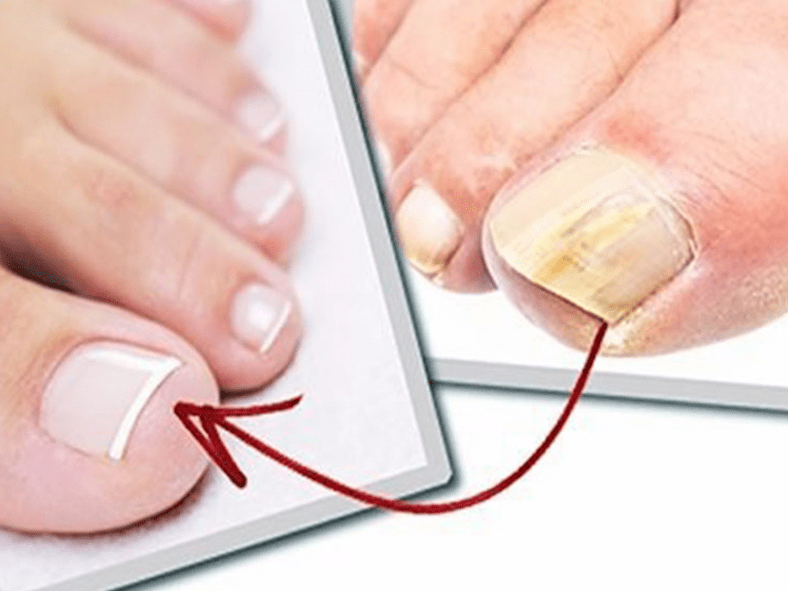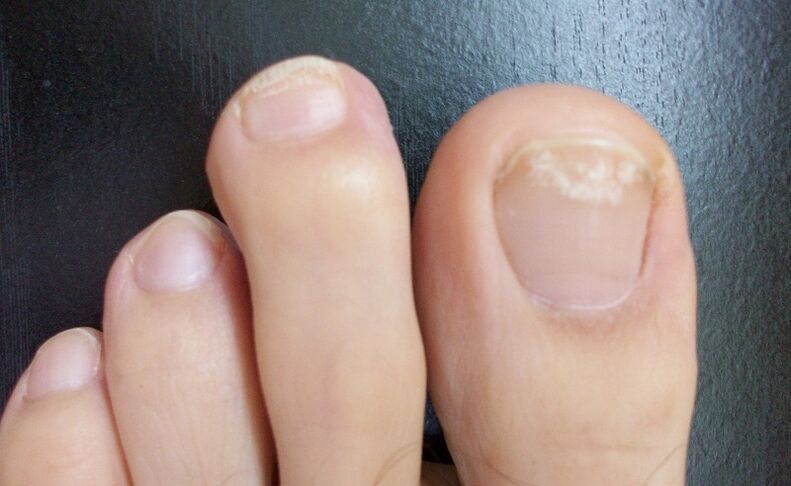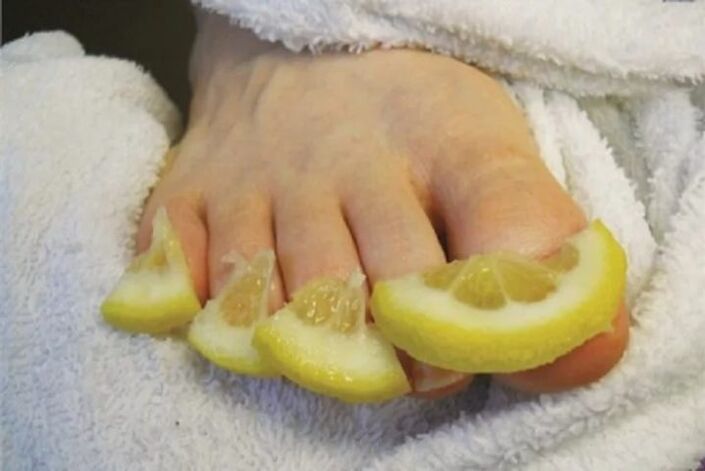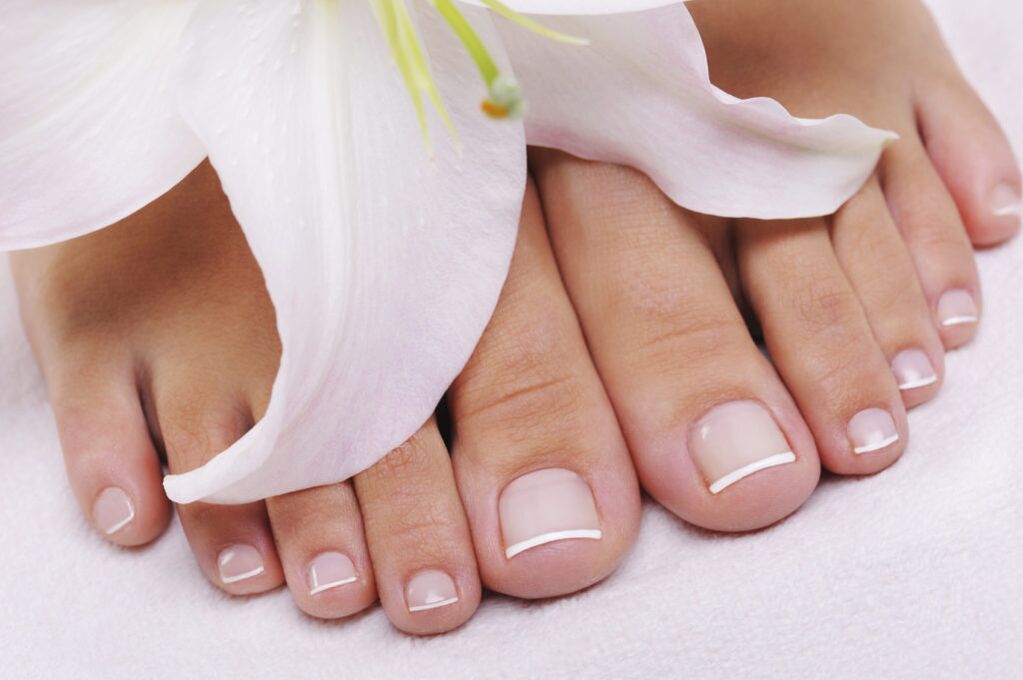
Why are fungi dangerous?
- Open wounds on the feet (scratches, ulcers, abrasions, corns);
- Violation of health regulations;
- Weak immunity;
- Antibiotics or other drugs used to treat any disease;
- Excessive sweating of feet.
first signs of fungus

Options for traditional methods of treating foot fungus

- Using laundry detergent has always been considered effective as it contains alkalis that can kill any type of fungus. Half a cup of the powder should be poured into the hot tub and your feet should be immersed in it. You should not sit for more than 15 minutes. This process must be repeated for 10 days.
- Everyone knows that garlic kills bacteria. When fighting fungi, it is used in its pure form by cutting a clove into two parts and soaking it in salt. There is no need to eat garlic, but it needs to be rubbed on the areas of the legs damaged by the fungus. Garlic can cause more irritation and redness and should not be used for extended periods of time. 5-7 minutes is enough.
- Applying ammonia compresses at night is also a folk remedy for treating foot fungus. Add a spoonful of ammonia to 250 milligrams of water, soak a natural fabric that retains moisture well in the solution, and wrap the legs.
- Apply a paste made from soda water to your feet for 20 minutes. This will stop the spread of germs.
- Sprinkle the steamed legs with boric acid powder and put on socks.
- Can iodine treat onychomycosis? Treating toenail fungus with iodine is not limited to the usual application to the affected area. A product made of iodine, acetic acid, glycerin and water in a ratio of 1: 2 (2 parts water) can be helpful when rubbed on the affected area at night. Before doing this, they need to be steamed so that the pores open and the medicine can penetrate better.
- The simplest method, which can only be used during the first stages of the disease, is to insert a tampon soaked in alcohol between the fingers. You can leave it overnight or until the alcohol is completely dry.
- Porridge of grated onions also helps to stop the spread of infection, for which it needs to be applied for several hours.
- How to treat foot and nail fungus with herbs? Dried chamomile, mint, sage and nettles are suitable for this purpose. They can be pressed into equal portions, poured into socks, and worn at night. The same powder cannot be reused, just like socks. In summer, fresh inflorescences can be used.
- Treating foot fungus with vinegar is very effective. How to treat onychomycosis with vinegar? To do this, you need to take a bath with a 9% vinegar solution. First you need to steam your feet, then pour vinegar into warm water and leave your feet there for 15 minutes so that the soles of your feet do not touch the bottom. After surgery, allow your feet to dry naturally without rinsing them with water.
- We use hydrogen peroxide to treat onychomycosis. The application process is the same as vinegar, except that you use 3% peroxide.
- Cut a lemon into slices and apply to the affected nail. Cover the top with gauze and wrap in film overnight.
prevention

- Don’t walk barefoot in public places;
- Wear rubber slippers when going to the gym, swimming pool, or water park;
- Use an antifungal varnish that has a bactericidal effect;
- Invest in comfortable fabric or leather shoes;
- Make sure that in the nail salon they only use heat-treated tools;
- Don’t use strangers’ slippers, towels or socks;
- Don’t wear the same socks every day;
- Wash your feet in the morning and evening;
- take vitamins;
- At the first signs of fungal disease, use a gel to relieve itching, peeling, and erosions.
What are the dangers and how to treat advanced onychomycosis at home
How to Treat Advanced Toenail Fungus with Folk Remedies
- Soak a cotton swab in propolis tincture containing 20% alcohol and apply it to the damaged nail. Propolis helps kill the fungus quickly, then the old nail plate falls off and the healthy nail plate grows back.
- Applying kombucha porridge to the affected area can help fight fungus. Use it for several hours a day.
- Use an ointment consisting of 100 g of butter, shelled eggs and 50 mg of 70% acetic acid daily. Place all ingredients into a jar without mixing. The ointment should be kept in the refrigerator for a week until the shell is completely dissolved. The ingredients can then be blended until smooth.
- Pour 15 grams of calamus root into boiling water and leave for 30 minutes. The infusion should be taken as a quarter cup, divided into four portions.
- In the evening, you need to apply the ashes of 3 cigarettes and 1/2 teaspoon of ointment to your nails. Fluoride toothpaste.

















